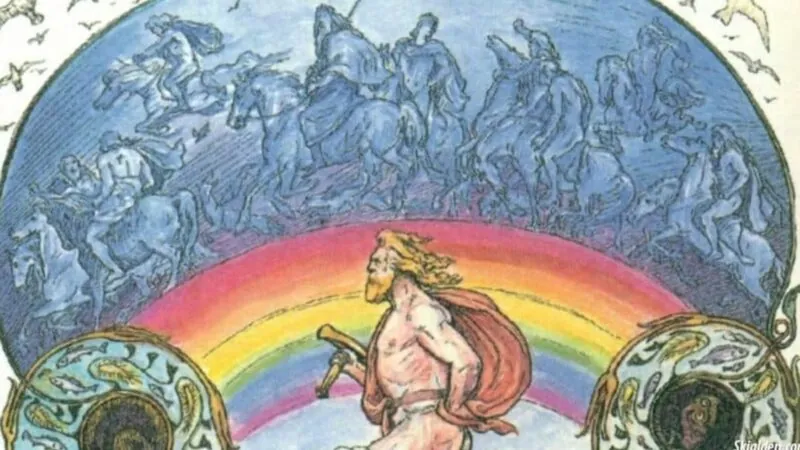Around the world, various icons and images carry deep meanings, inspiring strength and optimism. From ancient emblems to modern representations, these symbols serve as reminders that brighter days lie ahead.
Each carries a unique story, resonating across cultures and time, fostering a sense of unity and perseverance. Let’s explore them in the following sections.
1. Dove
The dove stands as a universal symbol of peace, purity, and hope. Its image transcends cultural and religious boundaries, offering a message of tranquility and renewal to all who embrace its presence.
Historically, the dove has roots in ancient mythology and religious texts. In the Biblical story of Noah’s Ark, a dove returns to Noah with an olive branch, signaling the end of the flood and the restoration of life on Earth. This story highlights the dove as a harbinger of hope and new beginnings.
You should also check out the powerful symbols of protection.
Symbolism Across Cultures
In addition to its Judeo-Christian associations, the dove also holds significant meaning in other cultures and religions. In ancient Greek mythology, the dove was linked to Aphrodite (Venus in Roman mythology), representing love and the renewal of life.
Similarly, in many peace movements throughout history, the dove has been used as a symbol to advocate for the end of conflict and the beginning of a peaceful era.
The Dove in Modern Times

Today, the dove continues to be an emblem of hope and peace. It is often used in art, literature, and ceremonies to convey a message of reconciliation and harmony. The image of a white dove carrying an olive branch remains a powerful symbol in peace negotiations and memorials around the world.
Fun Facts
-
Doves in the Wild: Despite their symbolic purity, doves are actually quite common birds found in many parts of the world. They are known for their distinct cooing sound and are closely related to pigeons.
-
White Doves at Events: The release of white doves at events, such as weddings and memorials, symbolizes the sending of a message of love, hope, and new beginnings to the heavens.
2. Rainbow
A rainbow, with its vibrant colors arching across the sky, acts as a powerful emblem of hope, promise, and diversity. It emerges after a storm, serving as a reminder that light follows darkness, and better times are ahead.
Rainbows form when sunlight refracts, or bends, in droplets of water, creating a spectrum of light in the sky. Each color, from red to violet, layers in harmony, symbolizing unity and diversity.
Cultural Resonance

In various myths and traditions, rainbows have been seen as bridges to the divine.
In Norse mythology, the rainbow bridge Bifrost connects the world of humans to the realm of the gods. In Irish lore, a common tale involves a leprechaun’s pot of gold hidden at a rainbow’s end, blending themes of fortune and the elusive nature of desires.
A Modern Symbol

Today, the rainbow flag waves as a sign of LGBTQ+ pride and acceptance, illustrating the spectrum of human identity and love. Its colors represent life, healing, sunlight, nature, harmony, and spirit, reinforcing the message of hope and inclusivity.
3. Olive Branch

The olive branch, an ancient symbol of peace and victory, carries a history rich with meaning. It represents reconciliation, new beginnings, and the end of conflict.
Originating in early civilizations, such as Greece and Rome, the olive branch was a gesture of peace or victory. In Greek mythology, the olive tree was a gift from the goddess Athena, becoming a symbol of prosperity and peace.
Political and Social Symbolism
In modern diplomacy, the olive branch continues to symbolize the quest for peace. It appears in the emblems of various organizations and nations, emphasizing a commitment to reconciliation and unity.
4. Light
Light represents knowledge, wisdom, and clarity in the face of ignorance and confusion. It guides the lost, provides comfort to those in despair, and reveals the unseen, making it a powerful emblem of discovery and understanding.
Cultural and Religious Significance
In many religious traditions, light is synonymous with divine presence. For instance, in Christianity, light is associated with Jesus Christ, who is referred to as the “Light of the World.” Similarly, in Hinduism, the festival of Diwali celebrates the victory of light over darkness, good over evil. The significance of light in these contexts underscores its role as a source of hope and spiritual awakening.
Light in Modern Symbolism
The lighting of candles during ceremonies or vigils serves as a gesture of remembrance and solidarity, while in science, light represents the pursuit of knowledge and the dawn of new discoveries.
5. Anchor

The anchor, a symbol steeped in maritime tradition, has evolved to represent stability, hope, and steadfastness. Originally a practical tool for ships, the anchor has become a powerful metaphor for holding firm in turbulent times.
Symbolism and Significance
In a spiritual context, the anchor is often associated with strength and unwavering faith. It represents the stable part of our existence, keeping us grounded no matter how stormy life gets. For many, it is a reminder to stay firm in their beliefs and convictions.
The Anchor in Modern Contexts
Tattoos of anchors have become popular, symbolizing hope, salvation, and calm. They remind individuals of their personal strength and the need to remain anchored in their principles and values.
Fun Facts
-
Anchor as a Christian Symbol: Early Christians used the anchor as a disguised cross during persecutions, representing hope in eternal life.
-
Nautical Milestones: Sailors traditionally get an anchor tattoo after crossing the Atlantic Ocean as a rite of passage, symbolizing their maritime achievements and adventures.
6. Lotus Flower

In Eastern religions and philosophies, the lotus holds profound spiritual significance. In Buddhism, it represents the purity of the body, speech, and mind, as well as spiritual awakening. In Hinduism, the lotus is associated with beauty, prosperity, and fertility, often linked with gods and goddesses.
The Lotus in Art and Literature
The lotus flower has inspired artists and poets for centuries, symbolizing the beauty and complexity of life. It serves as a reminder that from difficulty can emerge strength and beauty.
Fun Facts
-
Adaptive Growth: The lotus has a remarkable ability to regulate the temperature of its flowers, similar to warm-blooded animals.
-
Symbol of Resilience: The seeds of the lotus can remain viable for centuries, representing enduring hope and the potential for renewal.
7. Rising Sun

The rising sun marks the dawn of a new day, symbolizing hope, renewal, and the endless cycle of life. It serves as a reminder that after darkness comes light, offering a fresh start and new opportunities.
The imagery of the rising sun is powerful in many cultures, representing the promise of a new beginning. It is often associated with gods and goddesses of the sun across mythologies, embodying vitality, courage, and the divine.
The Rising Sun in Modern Symbolism
Flags and emblems featuring the rising sun convey optimism and the birth of new nations or movements. The symbol encourages individuals and societies to look forward with hope and determination.
Fun Facts
-
Sunrise Rituals: Many cultures perform rituals at sunrise to honor the sun’s life-giving energy and to welcome the new day with gratitude and intention.
-
Symbol of Enlightenment: In many spiritual traditions, the rising sun represents enlightenment, the ultimate awakening to truth and knowledge.
8. Butterfly

The butterfly, with its remarkable transformation from caterpillar to winged beauty, stands as a symbol of change, hope, and life. This metamorphosis represents the idea that significant changes can lead to beautiful outcomes, embodying the potential for personal growth and renewal.
The butterfly’s life cycle—egg, larva (caterpillar), pupa (chrysalis), and adult—mirrors the journey of human growth and transformation. It suggests that periods of inward reflection and struggle can lead to beautiful, unexpected forms of existence.
Cultural and Spiritual Meanings
In many cultures, the butterfly is seen as a messenger from the spiritual world, symbolizing the soul’s journey towards enlightenment. In Japan, it is often associated with marital bliss and joy, while in Native American cultures, it can represent guidance in change and transformation.
Fun Facts
-
Symbol of Immortality: In ancient Greece, the butterfly was synonymous with the soul, believed to live on after the physical body had passed away.
-
Diversity: There are over 20,000 species of butterflies worldwide, each with unique patterns that serve as camouflage, mate attraction, and warning signals to predators.
9. Green Shoots

Green shoots breaking through the soil symbolize new life, growth, and the return of vitality. This image is a powerful metaphor for recovery and hope, especially after a period of barrenness or hardship.
Fun Facts
-
Indicator of Change: The first green shoots of spring are often used by gardeners and farmers as indicators for planting seasons.
-
Symbol of Resilience: Certain plants are known for their ability to produce green shoots quickly after being affected by natural disasters, symbolizing nature’s incredible resilience and capacity for regeneration.
10. Stars

Stars have captivated humanity since ancient times, serving as symbols of guidance, aspiration, and the infinite possibilities of the universe. They light up the night sky, offering hope and inspiration to those who gaze upon them.
In many cultures, stars represent the souls of the departed, watching over the living from the heavens. They are often seen as a bridge between the earthly realm and the divine, embodying the eternal nature of the universe and life itself.
Modern Symbolism
Today, stars symbolize excellence, achievement, and ambition. They are used in flags, emblems, and awards to denote high honors and guideposts for success.
Fun Facts
-
Shooting Stars: Meteor showers, or “shooting stars,” are seen as omens of good luck and opportunities to make a wish for a brighter future.
-
Constellations: Ancient civilizations created constellations, grouping stars into patterns that tell stories of their myths, heroes, and gods.
11. Heart
The heart is universally recognized as a symbol of love, compassion, and the core of human emotion. Beyond its biological function, it represents the spiritual and emotional center of a person.
Since ancient times, the heart has been associated with life force and emotion. Egyptian mythology considered the heart the seat of the soul and moral integrity, judged in the afterlife.
In modern culture, the heart symbolizes emotional bonds and empathy. It is widely used in social media and communication to express love, support, and solidarity.
Fun Facts
-
Heart Symbol: The iconic heart shape, while not anatomically accurate, has become a universal sign of love and is celebrated globally, especially on Valentine’s Day.
-
Heartbeat: The human heartbeat is often used metaphorically to represent life, passion, and emotional responses.
12. Phoenix

The phoenix, a mythical bird, symbolizes rebirth, renewal, and immortality. Rising from its ashes, the phoenix represents the cycles of death and resurrection, and the enduring spirit of hope and transformation.
Mythological Origins
The legend of the phoenix spans various cultures, including Greek, Egyptian, and Chinese mythologies. It is typically depicted as a magnificent bird, engulfed in flames at the end of its life cycle, only to be reborn from the ashes.
The phoenix has been a potent symbol in literature and popular culture, representing resilience, the power to overcome adversity, and the promise of new beginnings.
Fun Facts
-
Symbol of Immortality: The phoenix’s ability to rise from its ashes makes it a symbol of eternal life and the indestructible essence of the human spirit.
-
Inspirational Metaphor: The phoenix is often used as a metaphor for overcoming challenges and emerging stronger from difficult situations.
13. Water
Water is essential to life and symbolizes purity, life, and renewal. Its fluidity and strength embody adaptability, emotional depth, and the subconscious.
Universal Symbolism
Across cultures, water is seen as a source of life and a medium for purification. It represents the flow of time, the cycles of nature, and the transformative power of change.
Fun Facts
-
The Water Cycle: The continuous cycle of water—evaporating, forming clouds, and precipitating back to earth—mirrors the cycle of life, death, and rebirth.
-
Cultural Festivals: Many cultures celebrate water through festivals that recognize its vital role in sustaining life and its cleansing properties.
FAQs
What is the symbol of life?
One of the most common symbols of life is the ankh, an ancient Egyptian symbol that represents eternal life and the divine life force. Another symbol of life is the flower of life, a sacred geometric pattern that contains the blueprint of all creation.
What tree means hope?
Different trees can symbolize hope in different cultures and contexts. For example, the olive tree is a symbol of hope and peace in the Bible, as it was the first sign of land after the great flood. The cherry blossom tree is a symbol of hope and renewal in Japan, as it blooms in spring and reminds people of the beauty and fragility of life.
What symbolizes rebirth?
There are many symbols of rebirth, but one of the most powerful ones is the phoenix, a mythical bird that dies in flames and rises from its ashes. The phoenix symbolizes the cycle of death and rebirth, as well as the possibility of transformation and renewal. Another symbol of rebirth is the lotus flower, which emerges from muddy waters and blooms into a pure and beautiful flower. The lotus symbolizes the spiritual awakening and enlightenment that can be achieved after overcoming suffering and ignorance.
What symbolizes inner peace?
One of the most popular symbols of inner peace is the yin yang, a Chinese symbol that represents the balance and harmony between opposite forces in the universe. The yin yang symbolizes the acceptance and integration of both light and dark aspects of oneself, as well as the connection and interdependence of all things. Another symbol of inner peace is the om, a sacred sound that is chanted in Hinduism and Buddhism. The om symbolizes the unity of mind, body, and spirit, as well as the vibration and energy of the cosmos.
What is an immortal symbol?
An immortal symbol is a symbol that represents the concept of eternal life or the ability to transcend death. Some examples of immortal symbols are the ouroboros, a snake that eats its own tail and forms a circle, symbolizing the endless cycle of creation and destruction; the infinity sign, a figure-eight shape that represents the infinite nature of time and space; and the horn of plenty, a horn-shaped basket filled with fruits and flowers, symbolizing abundance and prosperity.
What symbolizes a warrior?
A warrior symbol is a symbol that represents the qualities and attributes of a warrior, such as courage, strength, honor, and loyalty. Some examples of warrior symbols are the sword, a weapon that symbolizes power, protection, and justice; the shield, a defensive tool that symbolizes security, defense, and faith; and the lion, an animal that symbolizes bravery, leadership, and nobility.
Summary
Symbols carry profound meanings, echoing our collective journey towards hope and renewal. They stand as beacons, guiding us through darkness to light, embodying resilience and the universal quest for connection. Through these emblems, we find shared strength, a reminder that even in the face of adversity, we are not alone.







